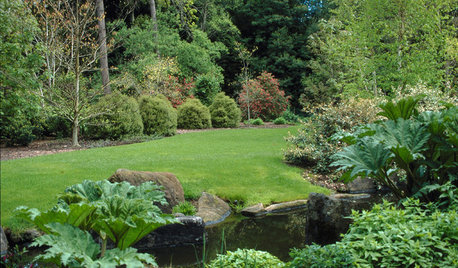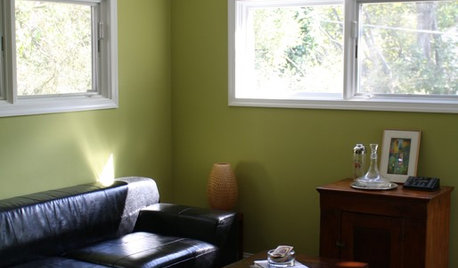Hi, I'm new to orchids (this Phal is my first and I've had it since November) and to this forum. I've been reading posts on helping Phalaenopsis for a good part of the morning, but haven't quite satisfied myself that I'm doing what I can for this plant. Thanks for any help you can offer.
I received this Phal in a mixed plant basket in November after my mom passed away. While it was a lovely gesture by some lovely friends, I've always had a bit of a brown thumb for house plants, so asked Mom to lend me some help from above. The other plants that were included (they were all replanted into new pots in mid December ... and now I suspect I waited too long ... are fine. The orchid, however, though it was gorgeous when it arrived (in full bloom with five lovely blossoms, which lasted over a month but are of course now gone and I've cut back the stalk to the first node as various websites on Phals have suggested), had been apparently stuffed into some sort of compressed paper stuff mixed with sphagnum moss and styrofoam chips, and it had already had one leaf start to turn yellow before I repotted. I repotted in orchid mix (a bark mixture), and when I did so, discovered that most of the roots had turned to black mush and died. There were a couple still living, though they looked rather rough, at the time. Since then, the three bottom leaves have all died (which happened in rapid succession after replanting ... since then, till now, the three remaining leaves have been fine), and the plant has yet to put out any new leaves ... or new root growth (*until this past week ... it appears that there are tips of two new aereal roots --?-- just starting to show at the points where two of the dead leaves fell off).
I'm a bit afraid I may have gone from overwatering (not that I was watering that much when it was in the mixed basket, but that compressed paper stuff ... it looked sort of like the stuff cardboard egg cartons are made of ... had held the water and turned soggy and rotted the roots) to not watering enough, as the roots (I examined them this morning) haven't put out any new growth, and the couple that still show life look about the same as they did when I repotted.
So, roots haven't improved, *but* it looks like it's finally showing a little growth. However, the leaves are suffering currently. The bottom most leaf of the three remaining leaves is just starting to yellow a bit in the center now, and the youngest leaf (it's grown since I got it, but is now ill) is wilted at the end (about 3 inches into the leaf from the tip).
I water about twice a week, since repotting. I mist lightly each morning (though have just started doing this in the past week or two, as reading up on the issues the plant is having leads me to wonder if the humidity isn't high enough). The plant sits in a south window, about two feet back from the window, with the rest of the plants from the basket. The window has a "clear" gauze curtain on it, which I keep closed, because the Phal did get some sunburn (clear spot on one leaf which then turned black) when I first put it in that window. We're in upstate NY, so at the moment there really isn't a whole lot of sunlight coming in that window many days. The temp in the room hovers around 68 degrees during the day, but tends to get warmer at night because certain family members a bad habit of cranking up the heat before going to bed ... the plants are in our bedroom, and since we have cats that just adore knocking planters over, it's really the only option -- because I can keep an ear on things at night this way.
I'd appreciate any thoughts that might help me adjust life for my plant so it begins to thrive.
Thank you.
--Gayze--
















bradarmi
gayzeOriginal Author
Related Discussions
Help with my Phalaenopsis
Q
Phalaenopsis Black Patches Help
Q
Opinions & assessments needed on these 3 Phalaenopsis. Re-potting?
Q
Do Phalaenopsis roots need light?
Q
mehitabel
orchid126
gayzeOriginal Author
mehitabel
gayzeOriginal Author
jane__ny
mehitabel
gayzeOriginal Author
orchid126
gayzeOriginal Author
orchid126